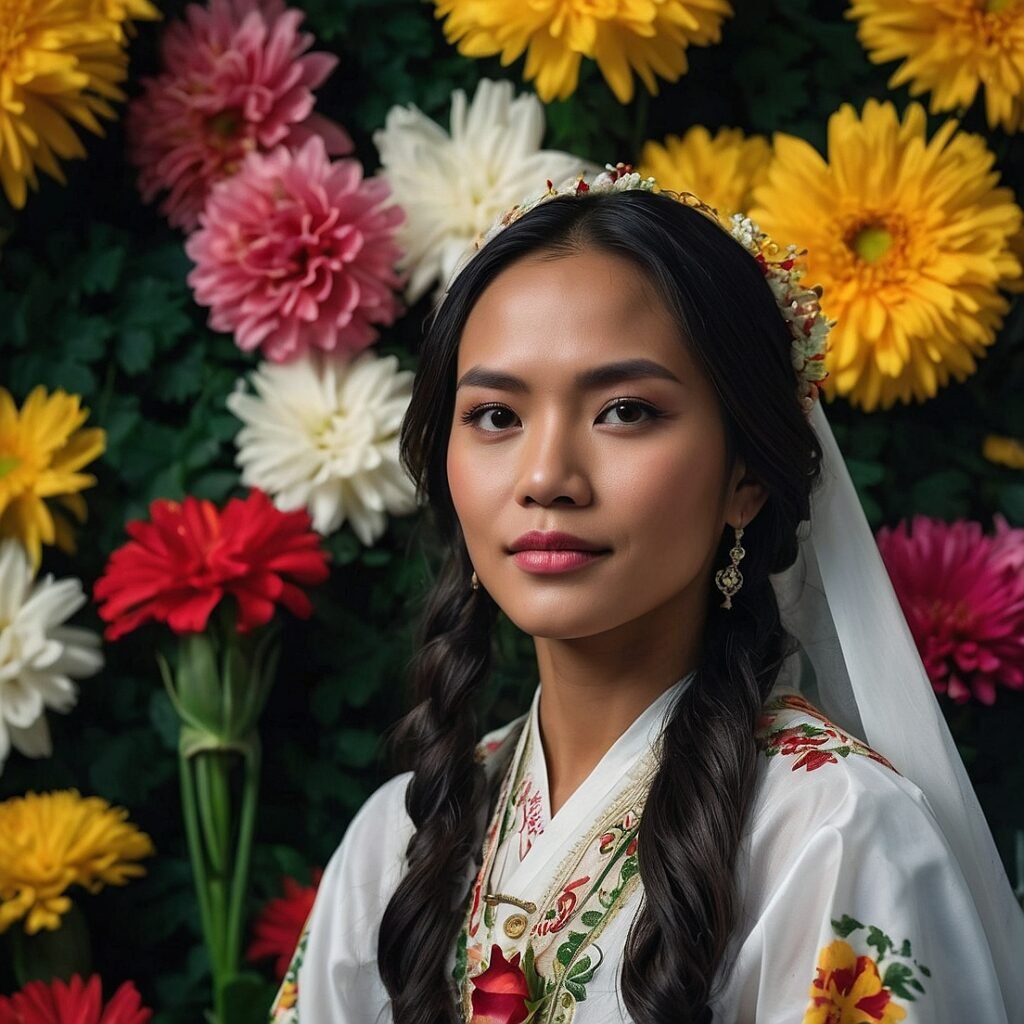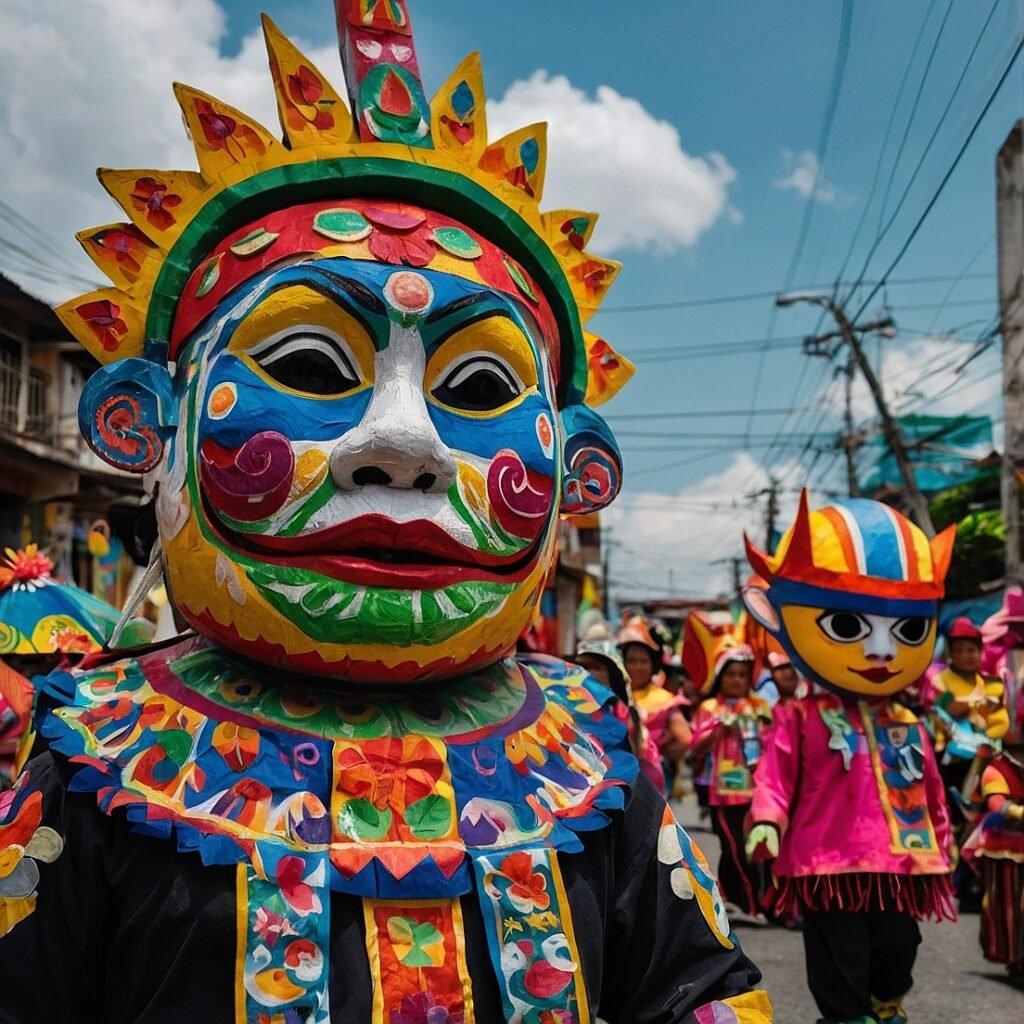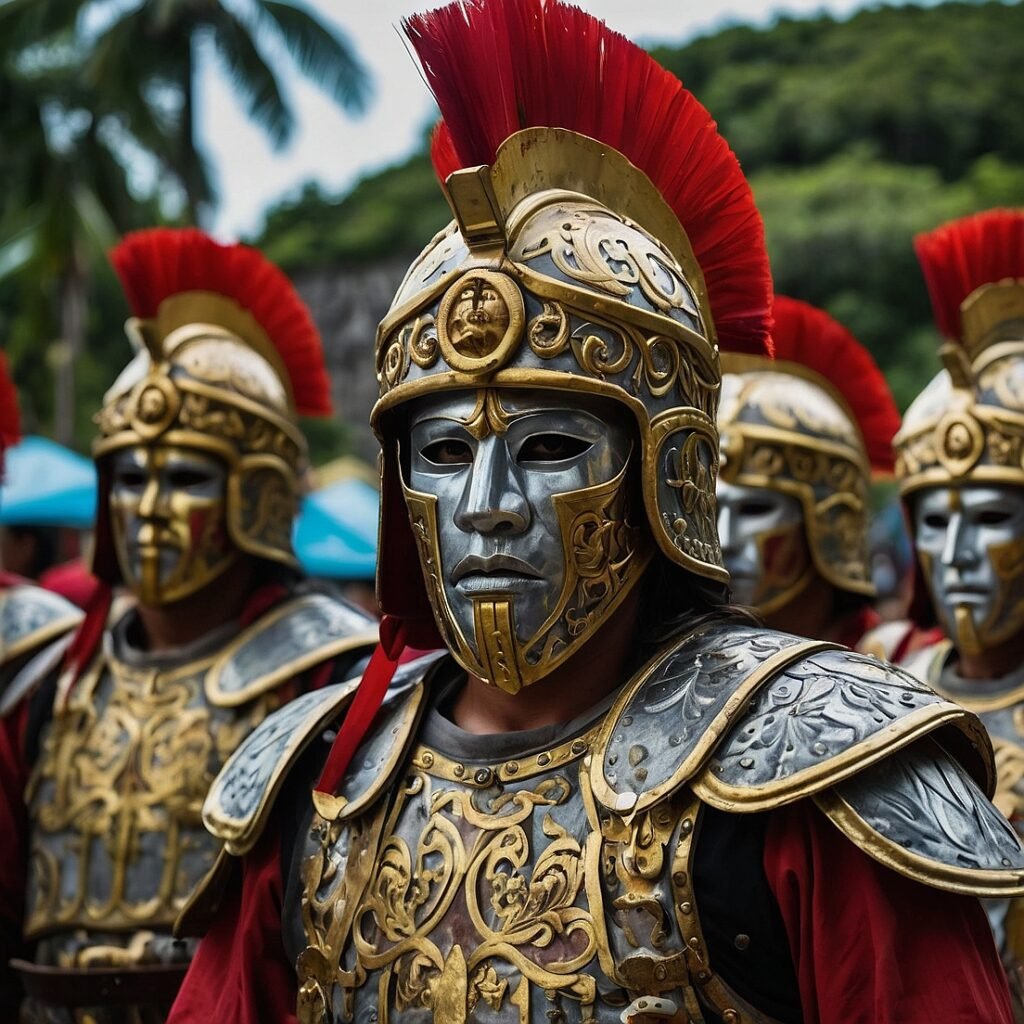Welcome, dear readers, to a colorful journey through one of the Philippines’ most beloved traditions – Flores de Mayo. As the scorching summer sun bathes the archipelago in its golden glow, an equally radiant celebration unfolds across the nation. Flores de Mayo, which translates to “Flowers of May” in English, is a month-long festival that paints the country with vibrant hues and fills the air with the sweet fragrance of devotion. This cherished tradition is a beautiful blend of Catholic faith, Filipino culture, and the natural splendor of the season. In this blog post, we’ll dive deep into the origins, customs, and significance of Flores de Mayo, exploring how this floral fiesta has blossomed into a cornerstone of Filipino heritage. So, grab a cool drink, find a cozy spot, and let’s embark on this fragrant journey together!
The Roots of Flores de Mayo: A Blossoming Tradition
Historical Origins
Like many cultural celebrations, Flores de Mayo has roots that stretch back through time, intertwining with the history of the Philippines itself. This beloved tradition first took root in the 19th century, during the Spanish colonial era. It was in 1854 when Pope Pius IX proclaimed the dogma of the Immaculate Conception, declaring that the Virgin Mary was conceived without original sin. This proclamation sparked a renewed fervor of Marian devotion across the Catholic world, including the Philippines. The Spanish friars, eager to nurture this devotion among the Filipino faithful, introduced the practice of offering flowers to the Virgin Mary throughout the month of May. This practice quickly took hold in the fertile soil of Filipino spirituality, blending with pre-existing indigenous traditions of reverence for nature and celebration of the harvest season. Over time, Flores de Mayo evolved from a simple offering of flowers into a rich, multi-faceted celebration that encompassed not just religious devotion, but also cultural expression, community bonding, and a celebration of the beauty of both nature and faith.
Cultural Significance
Flores de Mayo isn’t just a religious observance; it’s a vibrant thread in the tapestry of Filipino culture. This celebration bridges the gap between the sacred and the secular, bringing together people from all walks of life in a shared expression of faith, beauty, and community spirit. For many Filipinos, Flores de Mayo is a cherished childhood memory, evoking nostalgia for simpler times spent gathering flowers, participating in processions, and enjoying the festive atmosphere that permeates towns and villages. It’s a time when communities come together, strengthening bonds and preserving traditions that have been passed down through generations. The festival also serves as a showcase of Filipino craftsmanship and creativity, with elaborately decorated altars, intricate floral arrangements, and stunning costumes on display. In essence, Flores de Mayo is a celebration of Filipino identity itself – a beautiful fusion of indigenous culture, Spanish influence, and the enduring spirit of a people who find joy and meaning in honoring their faith and heritage.
The Flowers of May: Nature’s Offering to the Divine
Symbolic Blooms
At the heart of Flores de Mayo lies the simple yet profound act of offering flowers to the Virgin Mary. But these aren’t just any flowers – each bloom carries its own symbolism and significance. The choice of flowers is often deeply meaningful, with different varieties representing various virtues associated with the Virgin Mary. For instance, the pure white sampaguita, the national flower of the Philippines, symbolizes purity and devotion. The vibrant red gumamela (hibiscus) represents the blood of Christ and the martyrs, while the delicate pink roses signify love and grace. The fragrant ylang-ylang is often included for its association with humility, and the cheerful sunflower represents adoration and loyalty. By offering these flowers, devotees not only pay homage to the Virgin Mary but also express their aspiration to embody these virtues in their own lives. The act of gathering and arranging these blooms becomes a form of meditation, a way to connect with nature and reflect on the qualities one wishes to cultivate in oneself.
Floral Arrangements and Altars
The flowers gathered for Flores de Mayo aren’t simply placed in vases – they become works of art in their own right. Throughout the Philippines, you’ll find stunning floral arrangements adorning churches, homes, and community spaces during the month of May. Skilled florists and enthusiastic volunteers alike create elaborate displays that transform ordinary spaces into ethereal gardens. One of the most striking features of Flores de Mayo are the beautifully decorated altars dedicated to the Virgin Mary. These altars, often erected in homes or community centers, become focal points for prayer and reflection throughout the month. They typically feature a statue or image of the Virgin Mary surrounded by a profusion of flowers, candles, and other decorative elements. The creation of these altars is a labor of love, with families and communities often competing to create the most beautiful and meaningful displays. It’s not uncommon to see people gathering around these altars in the evenings, offering prayers and singing hymns in a touching display of communal devotion.
The Santacruzan: A Pageant of Faith and Beauty
Origins and Significance
While Flores de Mayo spans the entire month of May, it culminates in a grand procession known as the Santacruzan. This elaborate pageant, typically held on the last day of the festival, is a religious-historical commemoration of the finding of the True Cross by Helena of Constantinople, mother of Emperor Constantine the Great. The Santacruzan blends this historical narrative with the veneration of the Virgin Mary, creating a unique spectacle that is both a solemn religious observance and a joyous community celebration. The procession features a series of “sagalas” – young women chosen to represent various biblical and historical figures associated with the story of the True Cross and the virtues of the Virgin Mary. These sagalas, dressed in beautiful gowns and adorned with flowers, parade through the streets accompanied by their chosen escorts. The procession is led by the “Reyna Elena” (Queen Helena), who represents St. Helena herself, often accompanied by a young boy representing Constantine. This pageant not only serves as a beautiful visual representation of faith but also as a way to educate younger generations about important religious and historical figures.
Costumes and Characters
One of the most captivating aspects of the Santacruzan is the array of stunning costumes worn by the participants. The sagalas and their escorts are dressed in their finest attire, often in styles reminiscent of the Spanish colonial era or inspired by traditional Filipino formal wear. The gowns worn by the sagalas are often works of art in themselves, featuring intricate embroidery, beadwork, and layers of luxurious fabric. Each character in the procession has a specific costume and symbolism associated with them. For example:
| Character | Symbolism | Typical Costume |
|---|---|---|
| Reyna Elena | St. Helena, finder of the True Cross | Regal gown, often in purple or gold, with a crown |
| Reyna Fe | Faith | White gown with a cross symbol |
| Reyna Esperanza | Hope | Green gown with an anchor symbol |
| Reyna Caridad | Charity | Red gown with a heart symbol |
| Reyna Mora | The Muslim princess converted to Christianity | Colorful gown with Middle Eastern influences |
| Reyna Justicia | Justice | Purple gown with scales and sword |
These are just a few examples of the many characters that might appear in a Santacruzan. The specific lineup can vary depending on local traditions and the size of the community. The preparation of these costumes often begins months in advance, with families and communities pooling resources to ensure that their sagalas are dressed in the most beautiful and appropriate attire. The result is a stunning visual spectacle that draws spectators from far and wide, turning the streets into a living, moving tapestry of faith, history, and beauty.
Community Involvement: The Heart of Flores de Mayo
Preparation and Participation
Flores de Mayo is not just a spectator event – it’s a celebration that thrives on community involvement. In the weeks leading up to May, and throughout the month itself, communities across the Philippines buzz with activity as preparations get underway. Local churches and community organizations often take the lead in coordinating events, but the true magic of Flores de Mayo lies in the way it brings people together in a shared purpose. Families volunteer their time and resources, with each member playing a role according to their skills and abilities. Children might be tasked with gathering flowers or helping to create simple decorations. Teens and young adults often participate as sagalas or escorts in the Santacruzan, or help with organizing smaller events throughout the month. Adults lend their expertise in everything from floral arrangement and costume design to logistics and fundraising. Even the elderly play a crucial role, often serving as repositories of knowledge about traditional practices and guiding younger generations in the proper observance of customs. This intergenerational involvement ensures that the traditions of Flores de Mayo are passed down and remain vibrant and meaningful.
Fostering Community Spirit
Beyond the religious aspects, Flores de Mayo serves as a powerful catalyst for community bonding. The shared experience of preparing for and participating in the festivities creates lasting connections between neighbors and strengthens existing relationships. It’s not uncommon for friendships formed during Flores de Mayo preparations to last a lifetime. The celebration also provides an opportunity for communities to showcase their unique local traditions and talents. Many towns and cities host competitions for the best floral arrangements, most beautiful sagala costumes, or most impressive community altar. These friendly competitions foster a sense of local pride and motivate communities to put their best foot forward. Moreover, Flores de Mayo often becomes a homecoming of sorts, with family members who have moved away returning to their hometowns to participate in the celebrations. This influx of visitors can provide a boost to local economies, particularly in rural areas. From food vendors selling traditional delicacies to local artisans showcasing their crafts, Flores de Mayo creates opportunities for small businesses to thrive. In this way, the celebration not only nourishes the spirit of the community but can also contribute to its economic well-being.
The Evolution of Flores de Mayo in Modern Times
Adapting to Change
Like all living traditions, Flores de Mayo has evolved over time to reflect changing societal norms and circumstances. While the core elements of the celebration remain intact, many communities have found ways to adapt the festivities to modern contexts. One significant change has been the increasing focus on environmental sustainability. With growing awareness of ecological issues, many organizers are now encouraging the use of locally-grown, seasonal flowers and discouraging the use of non-biodegradable decorations. Some communities have even started incorporating educational components about environmental stewardship into their Flores de Mayo activities. Another notable evolution has been the gradual shift towards more inclusive participation. While traditionally the roles of sagalas were often limited to young women from prominent families, many communities now strive to involve a more diverse range of participants, regardless of social status. Some areas have also begun to include LGBTQ+ individuals in the celebrations, reflecting a growing acceptance and recognition of diversity within Filipino society. Additionally, the rise of social media has transformed how Flores de Mayo is celebrated and shared. Many events now have a strong online presence, with live-streamed processions and virtual floral offerings allowing those who can’t attend in person to participate from afar.
Challenges and Opportunities
Despite its enduring popularity, Flores de Mayo faces some challenges in the modern era. Urbanization and changing lifestyles have made it more difficult for some communities to maintain the month-long celebration in its traditional form. Many working adults find it challenging to dedicate as much time to preparations as previous generations could. There’s also the ongoing challenge of keeping younger generations engaged with the traditions, especially in an age of digital distractions. However, these challenges also present opportunities for innovation. Some communities have responded by condensing the celebrations into weekends or focusing on key events rather than maintaining daily activities throughout the month. Others have incorporated modern elements to appeal to younger participants, such as integrating contemporary music into processions or using technology to enhance the visual spectacle of the Santacruzan. Educational initiatives have also been developed to help younger Filipinos understand and appreciate the historical and cultural significance of Flores de Mayo. Despite these challenges, the enduring appeal of Flores de Mayo lies in its ability to bring people together in a celebration of faith, culture, and community. As long as it continues to fulfill this fundamental human need for connection and shared experience, Flores de Mayo is likely to remain a beloved tradition for generations to come.
Flores de Mayo Beyond Borders: A Global Celebration
Filipino Diaspora
The beauty and significance of Flores de Mayo have not been confined to the shores of the Philippines. As Filipino communities have spread across the globe, they’ve carried this beloved tradition with them, planting seeds of cultural heritage in new soil. In countries with significant Filipino populations such as the United States, Canada, and various parts of Europe and the Middle East, Flores de Mayo celebrations have become a way for the diaspora to maintain connections to their roots and share their cultural richness with their adopted homes. These international celebrations often adapt to local conditions while striving to maintain the essence of the tradition. For instance, in colder climates where May might not be the peak of flower season, organizers might use a mix of fresh and artificial flowers, or focus more on the Santacruzan procession rather than daily flower offerings. These adaptations showcase the flexibility and resilience of Filipino culture, able to thrive and find expression even in vastly different environments. Moreover, Flores de Mayo celebrations abroad often become focal points for the Filipino community, serving as opportunities for cultural exchange and fostering a sense of unity among expatriates.
Cultural Exchange and Tourism
Within the Philippines, Flores de Mayo has increasingly become a draw for cultural tourism. Many tourists, both domestic and international, plan their visits to coincide with these colorful celebrations. This has led to some towns and cities developing their Flores de Mayo festivities into major events, complete with cultural shows, food festivals, and artisan markets running alongside the traditional religious observances. While this commercialization has been met with some concern about maintaining the spiritual essence of the celebration, it has also provided opportunities for wider appreciation and understanding of Filipino culture. Some communities have found creative ways to balance tourism appeal with cultural authenticity, using the increased attention to educate visitors about the deeper meanings behind the festivities. Additionally, the interest from tourists has helped revive some traditional crafts associated with Flores de Mayo, such as handmade paper flower making or traditional embroidery for sagala costumes. This renaissance of traditional skills not only preserves cultural heritage but also provides economic opportunities for local artisans. As Flores de Mayo continues to captivate audiences both within the Philippines and around the world, it serves as a beautiful ambassador for Filipino culture, showcasing the warmth, creativity, and deep spirituality of the Filipino people.
The Enduring Bloom of Faith and Culture
As we come to the end of our journey through the vibrant world of Flores de Mayo, it’s clear that this celebration is far more than just a colorful festival. It’s a living, breathing embodiment of Filipino faith, culture, and community spirit. From its roots in 19th-century Marian devotion to its modern-day expressions both in the Philippines and around the globe, Flores de Mayo continues to evolve while remaining true to its core essence. This beloved tradition serves as a bridge between generations, a link to cultural heritage, and a testament to the enduring power of shared faith and communal celebration. Whether you’re a lifelong participant in Flores de Mayo or someone discovering its beauty for the first time, there’s something truly special about this month-long celebration of flowers and devotion. It reminds us of the importance of tradition, the beauty of nature, and the strength we find in coming together as a community. As the flowers of May continue to bloom year after year, so too does the spirit of Flores de Mayo, nurturing faith, culture, and human connection in hearts around the world.
Disclaimer: This blog post is based on information available up to 2021. While we strive for accuracy, cultural practices and specific details of celebrations may vary by region and can change over time. We encourage readers to verify current information and to respect local customs when participating in or observing Flores de Mayo celebrations. If you notice any inaccuracies, please report them so we can correct them promptly.




